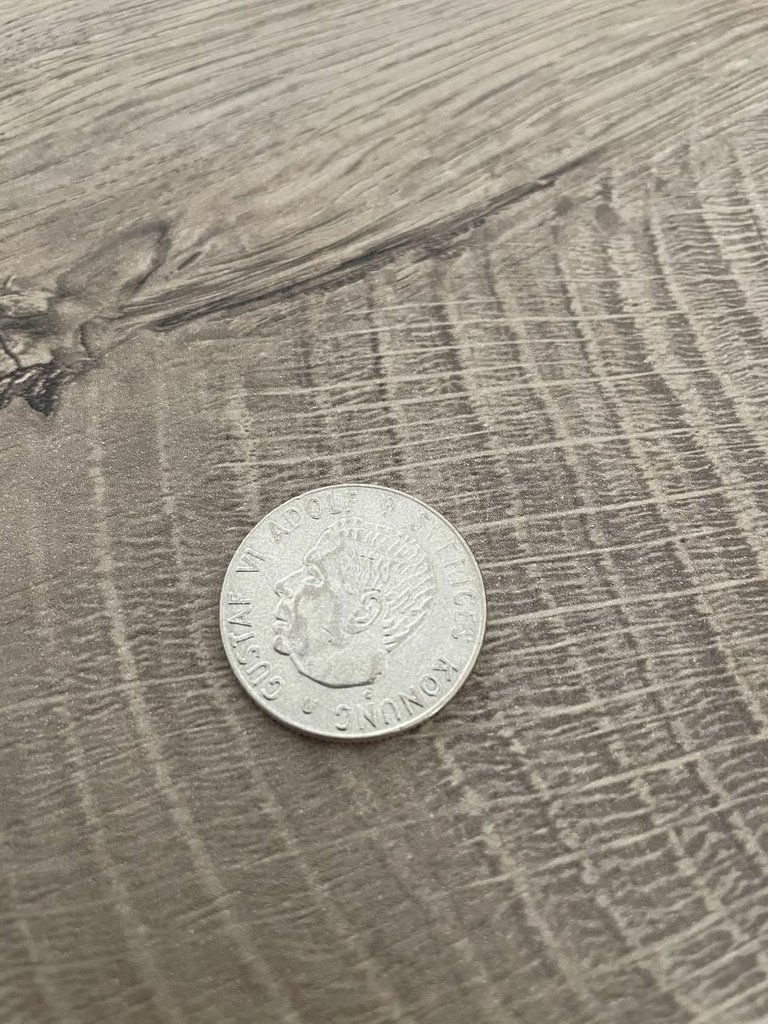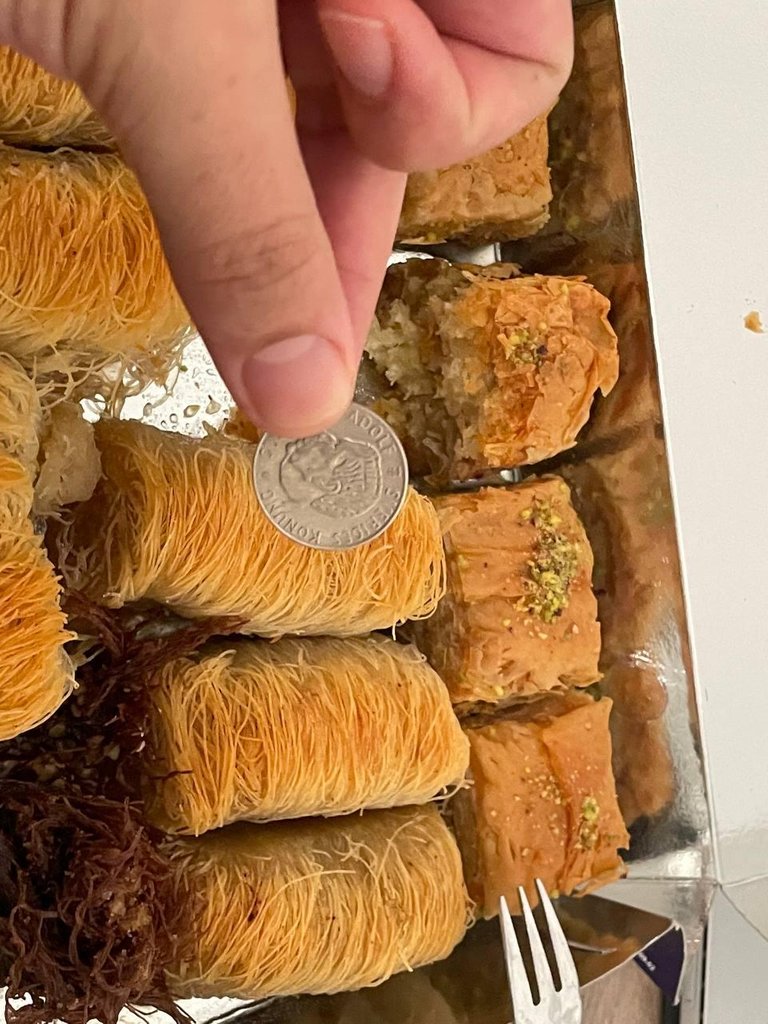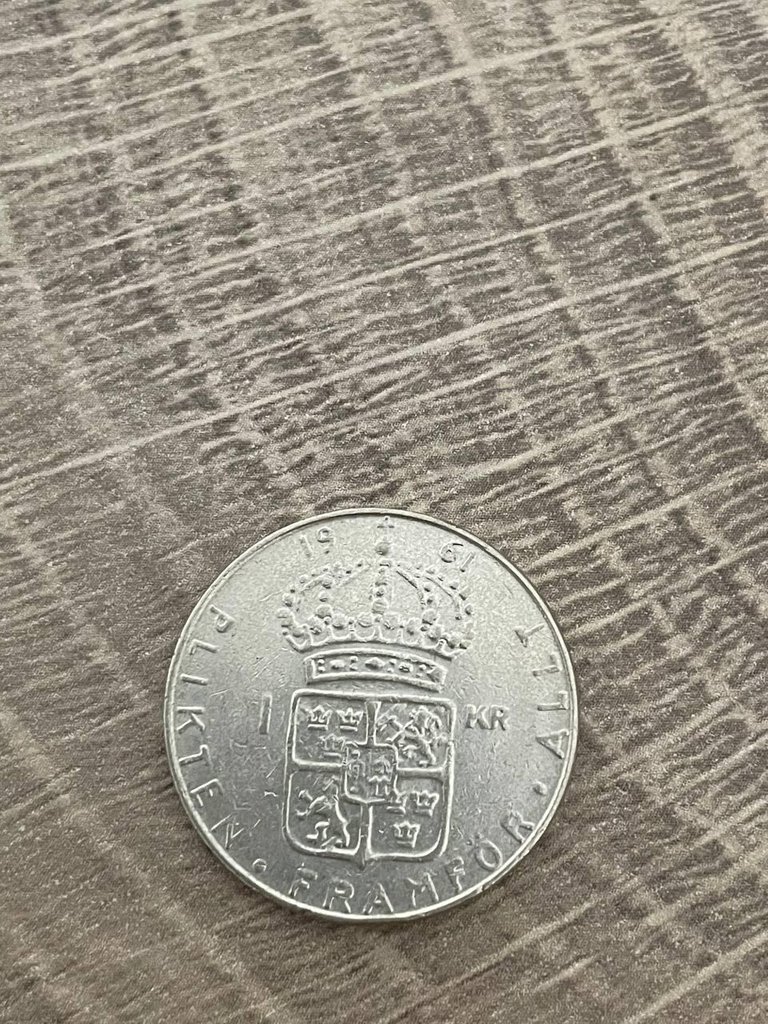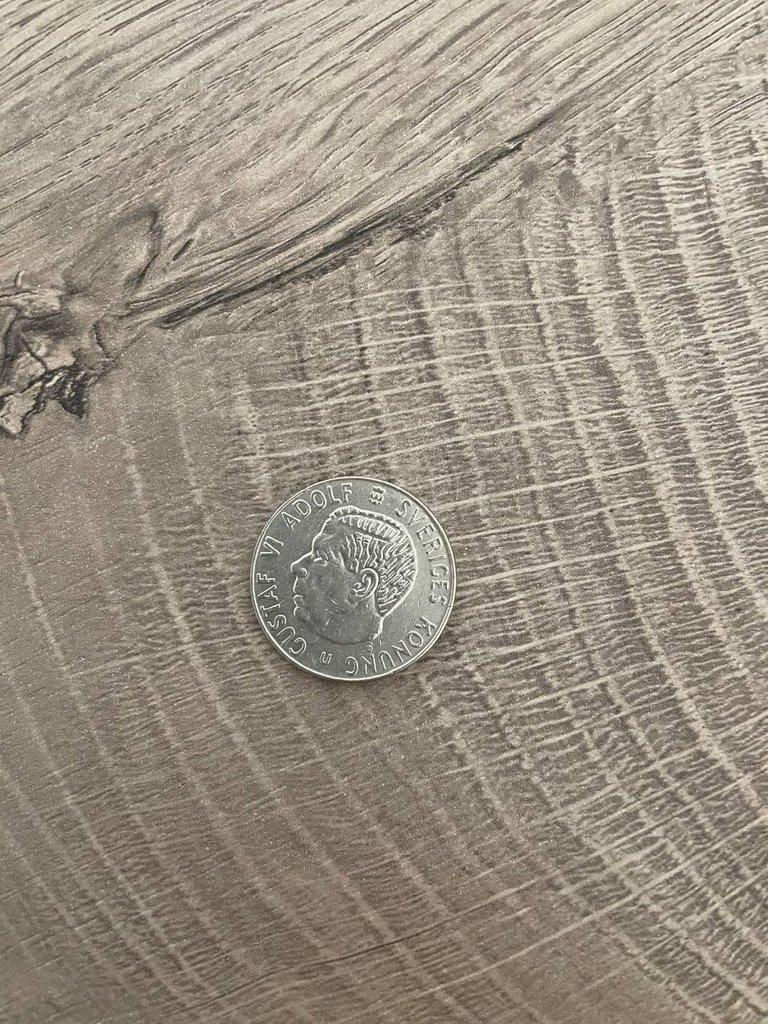Hey guys
Sunday today and i had a visit from a friend living on sweeden, He is on vacations and we had to see each other for 2-3 years. So he visited in my home to see the little and he brought me 2 perfect gifts!!!
He knows that i had started collection silver coins so he brought me that cutie and because he is a childhood friend and knows i love baklava and kantaifi he gifted me both!!!!!





Type: Gustav VI Swedish Silver Krona
Years: 1952 - 1968 Cat. Num.: KM# 826
Country: Sweden Period: Gustav VI
Currency: Swedish krona Face value: 1 Krona
System: Fourth reform 100 Ore = 1 Riksdaler Riksmynt = 1 Krona
Desgr/Engr:
Obverse: Gustaf VI left
Legend: GUSTAF VI ADOLF SVERIGES KONUNG
Reverse: Crowned shiled divides denomination
Legend: PLIKTEN · FRAMFÖR · ALLT
Edge: Reeded
Purpose: Circulation
Specifications
Composition: Silver
Fineness: 0.4000
Weight (g): 7.0000g
Weight (Oz): 0.23 Oz
Net Content: 0.09 Oz (2.80g)
Bullion Value: $1.77
Alignment: Medal
Diameter: 25.00mm
Thickness:
Year: 1961 TS
Mint:
Mintage: 4,283,000
Between 1873 and 1876, coins in denominations of 1, 2, 5, 10, 25, and 50 öre and 1, 2, 10, and 20 kronor were introduced, with the 1, 2 and 5 öre in bronze, the 10, 25, 50 öre and 1 krona and 2 kronor in silver, and the 10 and 20 kronor in gold. Gold 5 kronor coins were added in 1881.
Production of gold coins ceased in 1902 and was only briefly restarted in 1920 and 1925 before ceasing entirely. Due to metal shortages during World War I, iron replaced bronze between 1917 and 1919. Nickel-bronze replaced silver in the 10, 25 and 50 öre in 1920, with silver returning in 1927.
Metal shortages due to World War II again led to changes in the Swedish coinage. The nickel-bronze 10, 25 and 50 öre were again issued between 1940 and 1947. In 1942, iron again replaced bronze (until 1952) and the silver content of the other coins was reduced. In 1962, cupronickel replaced silver in the 10 öre, 25 öre and 50 öre coins, with the 2 kronor following suit and the 1 krona switching to cupronickel-clad copper in 1968 (and later being replaced entirely by cupronickel in 1982). Five-kronor silver coins were produced in 1954, 1955 and 1971, with designs similar to contemporary 1 krona and 2 kronor coins.
In 1972, a new, smaller 5 kronor coin was introduced, struck in cupronickel-clad nickel. The current design has been produced since 1974. In 1971, the 1 and 2 öre, as well as the 2 kronor coins ceased production. The size of the 5 öre coin was reduced in 1972. In 1984, production of the 5 and 25 öre coins came to an end, followed by that of the 10 öre in 1991. Also in 1991, aluminium-brass ("Nordic gold") 10 kronor coins were introduced, along with bronze-coloured 50 öre coins.
In March 2009, the government decided to cease production of the 50 öre coins, which, since October 2010, are no longer legal tender. The reason could include low purchasing power, higher production and distribution cost than the value and the coins cannot be used in most parking machines and vending machines.
Anything you want to know about silver coins you can find it here
https://www.silveragecoins.com/en/details?item=3991
Posted Using LeoFinance Beta

